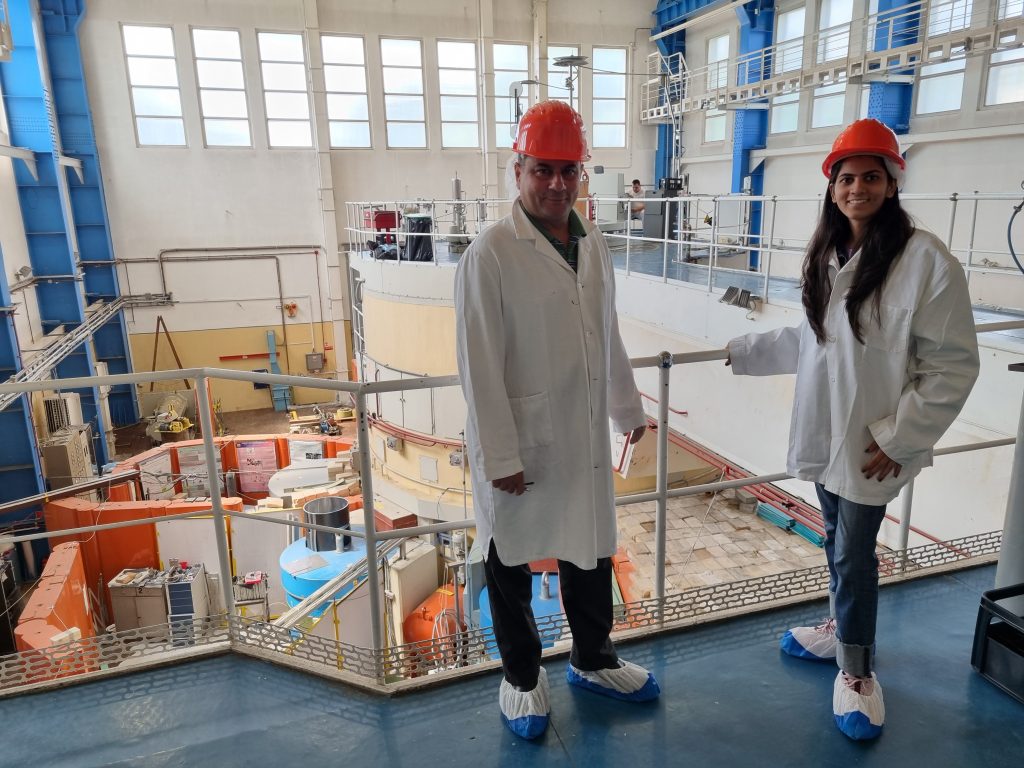The researcher’s corner: a talk with CERIC user Atul Khanna
Atul Khanna is Professor and Head of Physics Department at the Guru Nanak Dev University (GNDU) in Amritsar (India). Along with his doctoral and masters students, he is carrying out research on the synthesis and characterization of oxide glasses, fluorescent and battery materials. We talk with him while he was conducting experiments in Budapest, at the Hungarian CERIC partner facility of the Centre for Energy Research (EK).
When did you fall in love with science?
I got interested in science in school. However, I discovered and fell in love with it during the break I got just after completing school, when I went to Mumbai to live for some time with my grandmother. There, my two maternal uncles introduced me to their excellent collection of scientific books and magazines. The articles in magazines like Scientific American highly intrigued and motivated me.
And then? Can you tell us about your career?
I started my scientific career in 1991 at Bhabha Atomic Research Centre (BARC), Mumbai, after completing my master’s studies in physics from the Indian Institute of Technology, Delhi. After one year’s training, I joined the Technical Physics Division and initiated research and development work on thin film gas sensors. My first training was in the area of thin film growth of metal oxides by thermal evaporation technique, and I got a taste of the first scientific challenge in a project, to develop hydrogen sulphide gas sensor element for application in the Indian heavy water plants. In 1993, I went back to my hometown, Amritsar, to pursue PhD research in the area of borate glasses at GNDU. I become a permanent faculty member in the Applied Physics department of GNDU in 1997, and between 2004-2006 I worked as a postdoctoral research associate at the University of Arkansas Fayetteville – USA, on a project to prepare alumina coatings for cutting tool applications. After returning to India in 2006, I restarted work on oxide glasses and renewed collaborations with BARC scientists. In the last two decades, we have extensively used several research facilities, including the ones at the Raja Ramanna Centre for Advanced Technology (in Indore), which has two synchrotrons that are a big support to the Indian researchers.
Which are the main challenges that you have faced so far?
In my early years at GNDU, the main challenge was the lack of experimental equipment. However, during the last 10 years, a lot of research equipment has been established in my university. Several national consortiums for scientific research have been established across India by the Indian government agencies. Moreover, there are now greater opportunities to start collaborations both at national and international levels. Now the main challenge that I face is to commercialise the science and technologies developed in the laboratory, and to establish industrial tie-ups and start-ups.
What are you studying at the moment?
We are studying the short-range structure of series of iron phosphate glasses and alumino-borosilicate glasses by neutron diffraction. The diffraction datasets will be analysed by pair distribution function and Reverse Monte Carlo simulations to understand the glass structural properties such as bond-lengths and co-ordination environments.

How did you discover CERIC, and why did you choose to perform your experiments with the consortium?
I came to know about CERIC from my collaborator, Dr. Margit Fábián, who is in charge of the PSD beamline at the Budapest Neutron Centre (BNC). The BNC has excellent beamlines’ data quality. Moreover, the contact scientists are dedicated and provide full support during measurements and data analysis.
How is you experience in Budapest so far?
Our experience with travel and accommodation arrangements by CERIC has been simply excellent. Measurements on the samples and their schedule have been carefully planned by the beamline scientist in advance. CERIC has provided two of us (my student, Ms. Vedika Khanna, and myself) with a comfortable and an excellent hotel close to the institute and Budapest city centre, and Dr. Margit Fábián pre-arranged 15 days city transportation passes for us. Moreover, we had the occasion to visit the Hungarian countryside and the beautiful Balaton lake with her.
What are/will be the main advantages that you’ve encountered by working with CERIC for your research and career?
CERIC provides access to the start-of-art materials’ characterisation techniques that are a boon for any researcher working anywhere in the world. The quality of research and publications improves with such collaborations. Long-term international projects can be initiated out of these visits. Moreover, it is an excellent training platform for young masters and doctoral students.
-
30.06.2025
CERIC Newsletter | June 2025
-
30.06.2025
The CERIC 2024 Report is online



